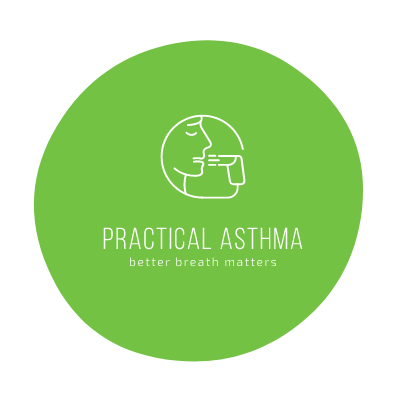Allergic asthma – what causes it?
Asthma has many causes
Did you know? Bronchial asthma is the most common chronic disease in children and its rate is increasing every year. Up to ten percent of people under the age of 18 are affected by asthma, as are one in twenty adults. Asthma is especially common among people with allergies. And asthmatics are particularly often allergic. What is the cause of this?
What are the basic triggers of asthma?
In principle, doctors distinguish between allergic asthma and non-allergic asthma. The triggers for allergic asthma are allergens, which are substances that cause the immune system to overreact. These allergenic substances are present in a wide variety of areas.
The most important allergens are
- grass and tree pollen
- dust mites and their droppings
- certain proteins from dogs and cats, for example, which are found in the air we breathe via their fur.
Moreover, bronchial asthma does not have a unique clinical picture. However, the typical symptoms have the same causes: on the one hand, a narrowing of the airways and, on the other hand, a bronchial hypersensitivity that leads to inflammatory changes. The consequences can be breathing difficulties, wheezing, coughing and a feeling of tightness in the chest cavity. These symptoms vary from patient to patient and are not always simultaneous.
Allergic asthma
Allergic asthma often begins in childhood. Most of the time, this form of asthma is preceded by an allergic cold (rhinitis). Atopic dermatitis (atopic eczema) may also appear beforehand. In the beginning, it is often allergens that trigger the symptoms, which then increasingly lead to inflammation of the airways.
Often, the inflammation persists and progresses even in the absence of the allergen initially responsible.
Causes and risks of allergic asthma
It is not possible to know with certainty why allergic bronchial asthma occurs. It is certain, however, that the disease is triggered by the meeting of a genetic predisposition and certain external stimuli. This is the case, for example, when an asthmatic is suddenly exposed to a particularly heavy load of pollen or house dust (or dust mites) to which he or she is allergic and has the corresponding predisposition. These allergens can then cause an asthma attack.
Acute narrowing of the bronchial tubes reduces the airflow of asthmatics. In addition, viscous secretions and the transformation of the airway mucosa into non-functional connective tissue (remodeling) can narrow the airways. In this case, patients usually complain of typical symptoms such as shortness of breath, which often occurs in fits. Wheezing, coughing and a feeling of tightness in the chest cavity are also common.
Facts and figures on polygenic inherited predisposition
There is scientific evidence that inherited predisposition from multiple genes (polygenic) can play an important role in the development of allergic asthma. According to one study, when both parents have allergic asthma, the children have a 60-80% risk of also having allergic asthma. Particularly impressive evidence for this is the situation on Tristan da Cunha Island, considered the most isolated of all inhabited islands in the world. About half of the population there suffers from asthma due to family heredity.
Hay fever as a cause of allergic asthma
Not every contact with an allergen that can trigger asthma leads to asthma. In particular, if you are allergic to pollen, you do not necessarily have asthma. However, it is possible for allergic asthma to develop from hay fever. This is a worsening and extension of your allergic condition, which was previously limited “only” to classic “hay fever”. Contact with allergens no longer only causes allergic reactions and disorders in the nose, pharynx and eyes, but also in the bronchi. This is why we often speak of “switching floors” or “allergy walking” – and this is not so rare.
Approximately one in four people with pollen allergy can expect a change in floor after about ten years of illness. In patients with dust mite allergy, one out of every two people even develops allergic asthma during the same period. And another phenomenon can also be observed in this context: The diversity of allergy triggers also increases. Whereas in the beginning it was mainly a particular allergen that was responsible for the allergy and the accompanying asthmatic disorders, the patient can now react hypersensitively to other allergens. The periods without exposure to allergens are therefore becoming shorter and shorter.
Bronchial asthma is not a uniform clinical picture. Rather, it is a combination of symptoms of different diseases. These are partly due to the reversible narrowing of the airways and partly to bronchial hypersensitivity due to inflammatory changes. There is also a genetic predisposition to allergy and asthma. Often, allergic asthma is accompanied by other allergic symptoms at an early stage. In many cases, the allergy only worsens after a few years and moves towards the bronchi. This is known as a stage change. If you do not wish to take this risk, you should discuss appropriate treatment options with your specialist.
